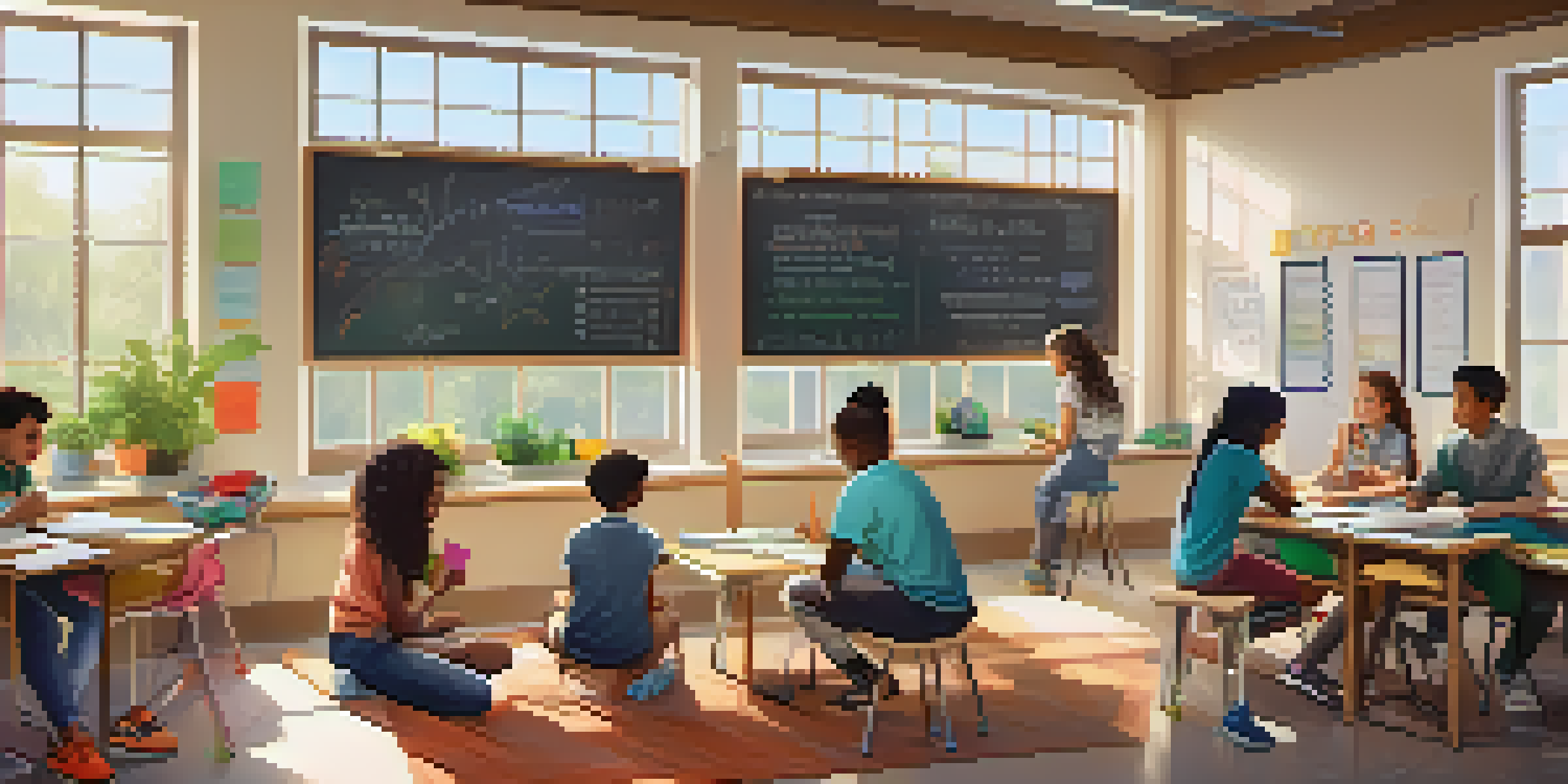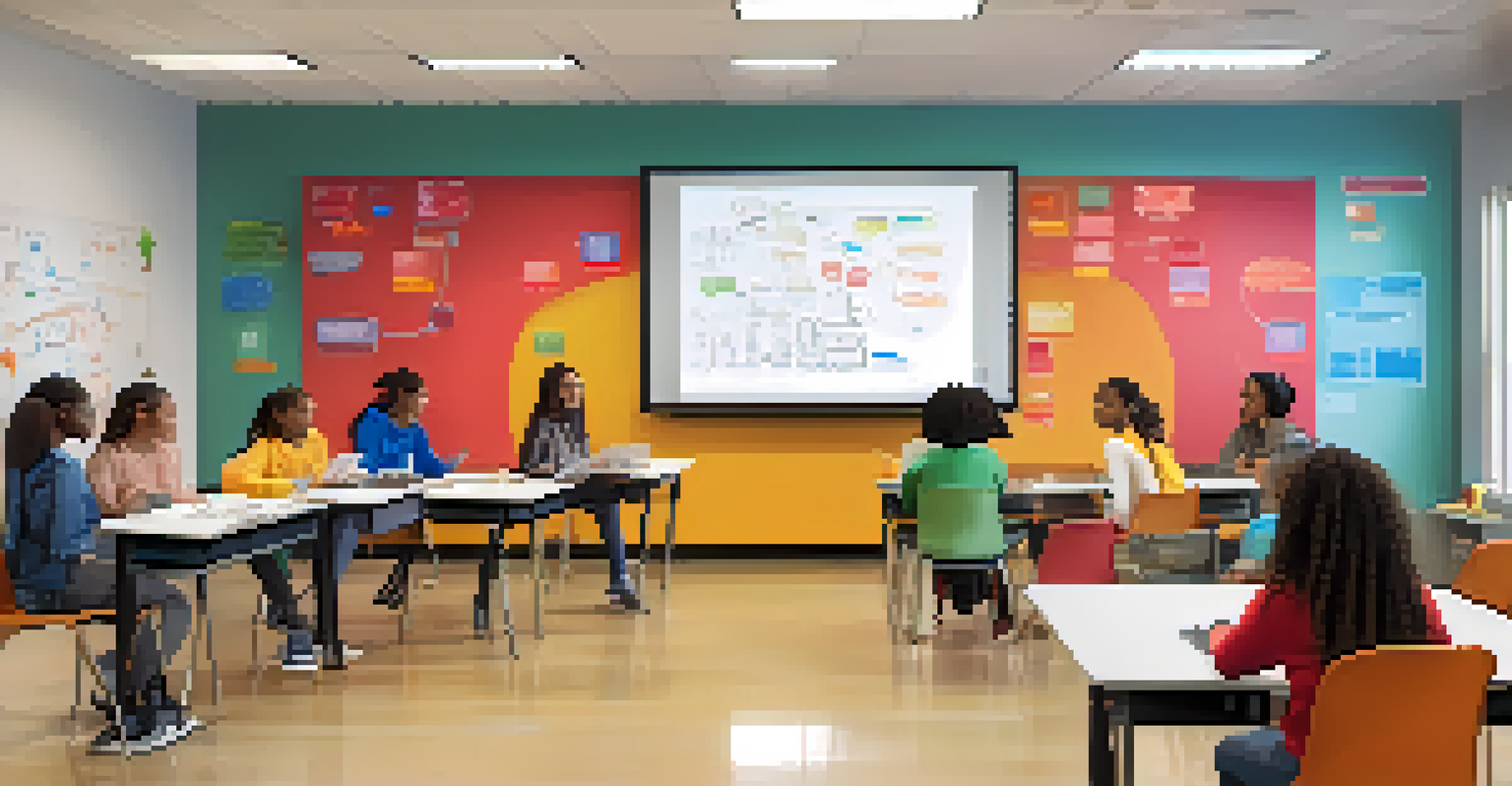Key Strategies for Implementing Student-Centered Learning

Understanding the Basics of Student-Centered Learning
Student-centered learning shifts the focus from the teacher to the student, emphasizing their needs, interests, and learning styles. This approach encourages active participation and fosters a deeper understanding of the material. Rather than passively receiving information, students engage in discussions, collaborate with peers, and take ownership of their learning journey.
Education is not the filling of a pail, but the lighting of a fire.
At its core, student-centered learning values each student's perspective and encourages them to ask questions and explore topics that resonate with them. This personalized approach can lead to higher motivation and engagement, as students feel more connected to their learning experiences. The result? A classroom dynamic that promotes critical thinking and creativity.
Ultimately, understanding the fundamentals of this approach is critical for educators looking to create an environment where students thrive. By embracing this mindset, teachers can transform their classrooms into vibrant learning communities that support diverse learning needs.
Creating a Supportive Learning Environment
A supportive learning environment is crucial for implementing student-centered learning. This means not only creating a physical space conducive to collaboration and creativity but also fostering emotional safety where students feel comfortable expressing their thoughts. When students know they are valued, they are more likely to take risks in their learning.

Incorporating flexible seating arrangements, interactive technologies, and collaborative workspaces can enhance the learning atmosphere. For instance, using group tables can facilitate discussions and teamwork, while providing quiet zones allows for individual reflection. Such environments encourage students to engage and collaborate with their peers, which is essential for their growth.
Moreover, establishing clear expectations and routines helps students understand how to navigate this new learning landscape. When students feel secure in their surroundings, they can focus on their learning without distractions. This combination of physical and emotional support lays the groundwork for successful student-centered learning.
Encouraging Active Participation and Engagement
Active participation is a cornerstone of student-centered learning. Encouraging students to take part in discussions, group projects, and hands-on activities can significantly enhance their learning experience. When students are actively involved, they are more likely to retain information and develop essential skills such as teamwork and communication.
Tell me and I forget. Teach me and I remember. Involve me and I learn.
Incorporating various teaching methods, such as project-based learning or inquiry-based learning, can foster this engagement. For example, allowing students to work on real-world problems encourages them to think critically and apply their knowledge. This approach not only makes learning more relevant but also empowers students to take control of their education.
Additionally, providing choices in how students demonstrate their understanding can further boost engagement. When students are given the freedom to choose their projects or topics, they are more likely to invest time and effort into their work. This sense of ownership not only fuels their passion for learning but also cultivates a lifelong love for education.
Utilizing Technology to Enhance Learning
In today's digital age, technology plays a vital role in student-centered learning. Tools like educational apps, online forums, and collaborative platforms can enhance communication and encourage collaboration among students. By integrating technology, teachers can create dynamic learning experiences that cater to diverse learning styles.
For instance, using platforms like Google Classroom allows for easy sharing of resources and assignments, fostering a more interactive environment. Additionally, tools like Kahoot! or Quizlet can make assessments fun and engaging, allowing students to learn through play. This tech-savvy approach helps bridge the gap between traditional and modern learning methods.
However, it’s essential to strike a balance between technology and traditional teaching methods. While technology can enhance learning, it should not replace essential face-to-face interactions. By thoughtfully integrating technology, educators can create a rich, student-centered learning experience that prepares students for the future.
Differentiating Instruction for Diverse Learners
Differentiating instruction is crucial in a student-centered classroom, as every student has unique learning needs. By tailoring lessons to different skill levels, interests, and learning styles, teachers can ensure that all students receive the support they need to succeed. This approach not only enhances understanding but also promotes a sense of belonging among students.
For example, providing various options for assignments—like written reports, presentations, or creative projects—allows students to engage with the material in ways that resonate with them. Additionally, incorporating various teaching strategies, such as visual aids for visual learners or hands-on activities for kinesthetic learners, can make a significant difference in student comprehension.
Ultimately, differentiation fosters an inclusive classroom environment where every student feels valued and empowered. By recognizing and addressing the diverse needs of learners, educators can create a more equitable and effective educational experience.
Involving Students in Goal Setting
Involving students in setting their learning goals promotes ownership and accountability in their educational journey. When students are active participants in defining what they want to achieve, they are more likely to stay motivated and focused. This practice also encourages self-reflection, helping students understand their strengths and areas for growth.
Teachers can facilitate this process by guiding students in creating SMART goals—Specific, Measurable, Achievable, Relevant, and Time-bound. For example, a student might set a goal to improve their math skills by completing a certain number of practice problems each week. This clarity helps students track their progress and make adjustments as needed.
Moreover, regular check-ins on these goals foster a sense of accountability and encourage students to celebrate their successes. By involving students in this process, educators empower them to take charge of their learning and cultivate a resilient mindset that will serve them well beyond the classroom.
Reflecting on Learning to Foster Growth
Reflection is a powerful tool in the student-centered learning process. By encouraging students to think critically about their experiences, they can identify what worked, what didn’t, and how they can improve. This practice fosters a growth mindset, where students understand that learning is a continuous journey filled with ups and downs.
For instance, incorporating reflective journals or group discussions at the end of a unit allows students to express their thoughts and feelings about their learning experiences. These reflections not only deepen understanding but also help students develop critical thinking skills as they evaluate their progress. It can be enlightening for students to share their insights with peers, reinforcing the idea that everyone’s learning journey is unique.

Additionally, educators can model reflective practices by sharing their thoughts on teaching experiences. This openness creates a culture of learning and improvement, where both students and teachers can grow together. Ultimately, reflection is essential for fostering a resilient and adaptive learning environment.